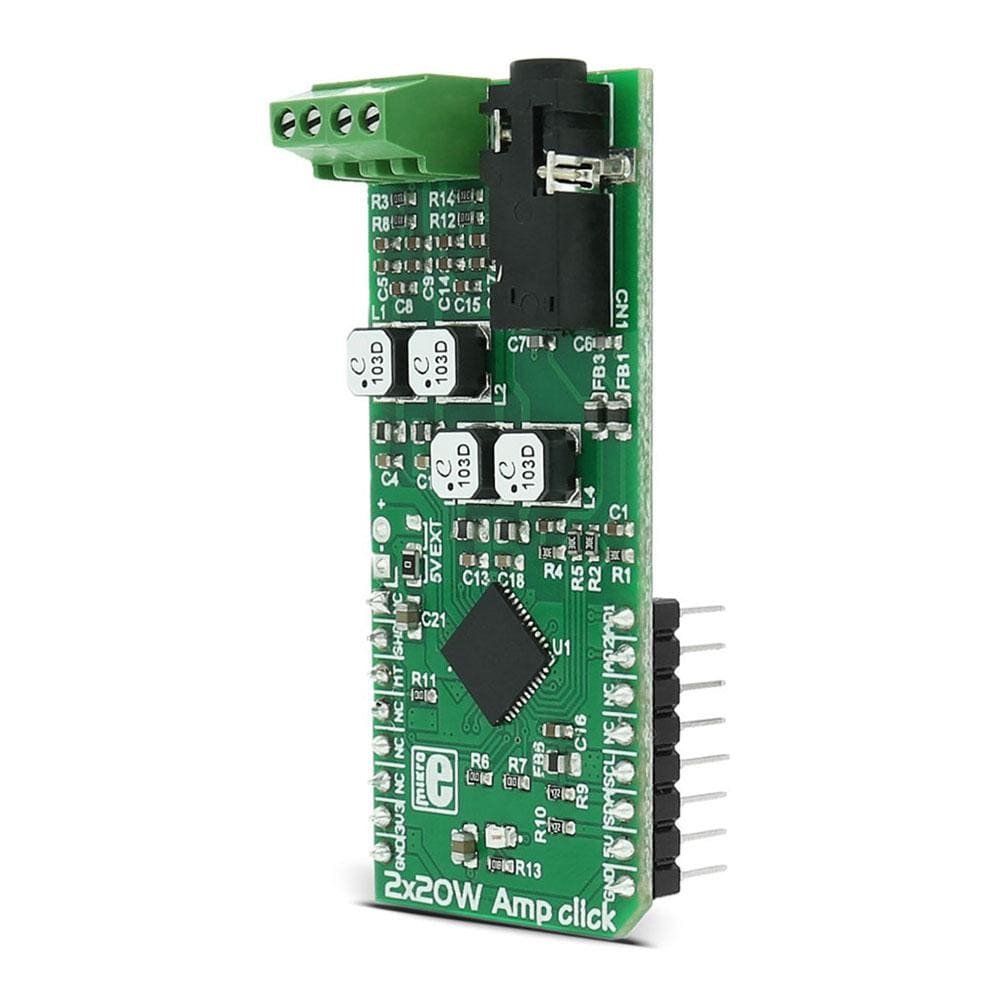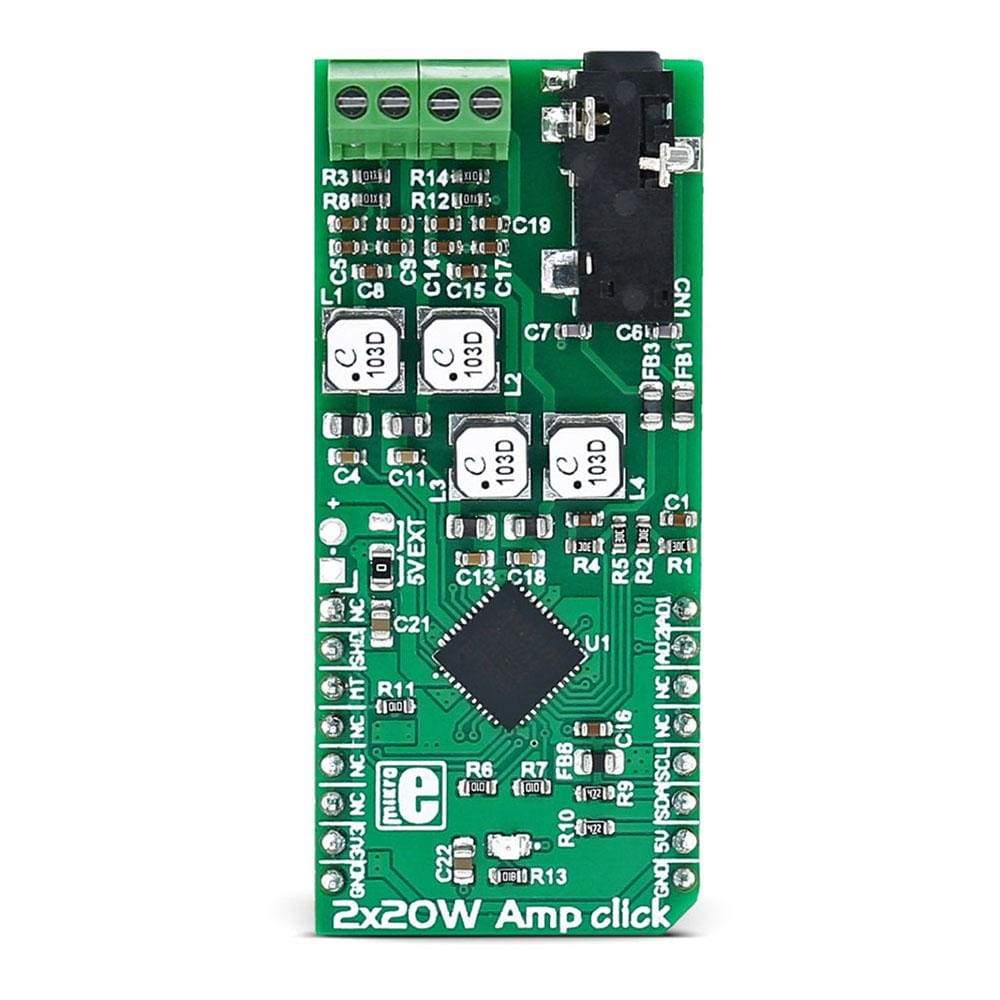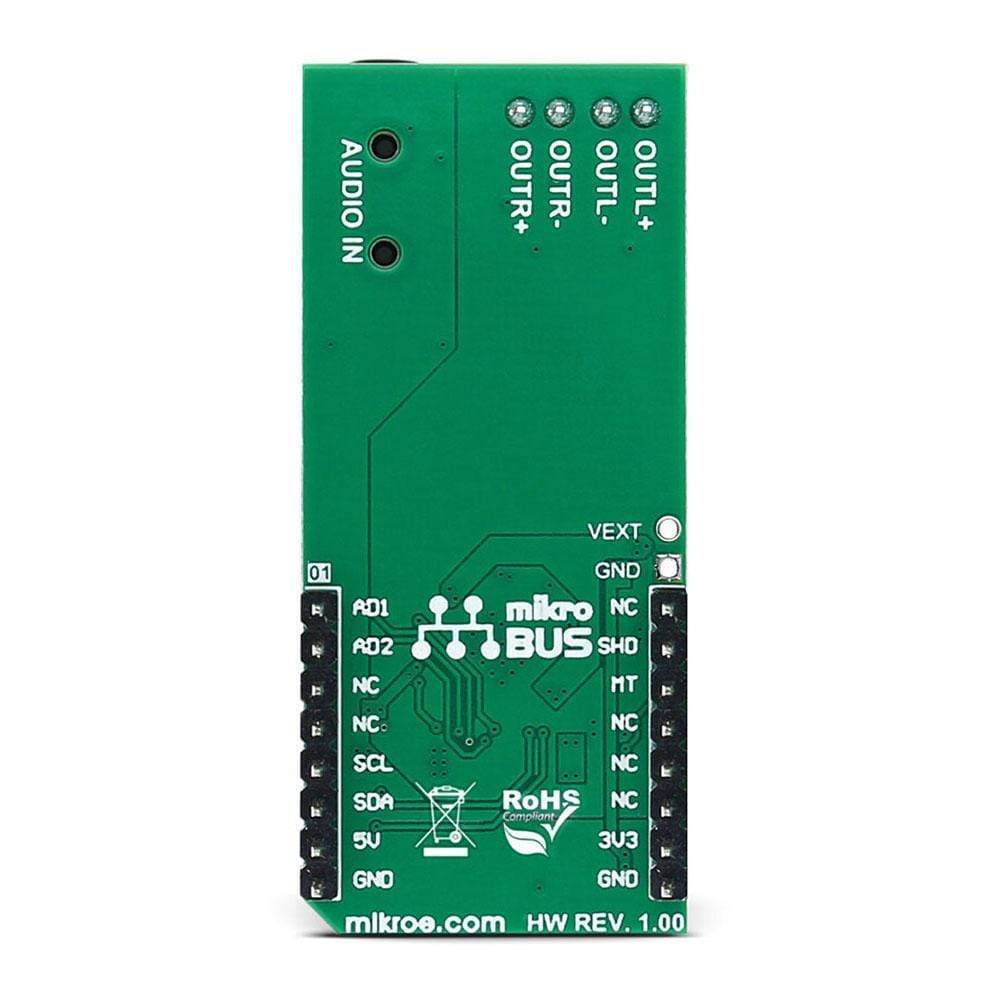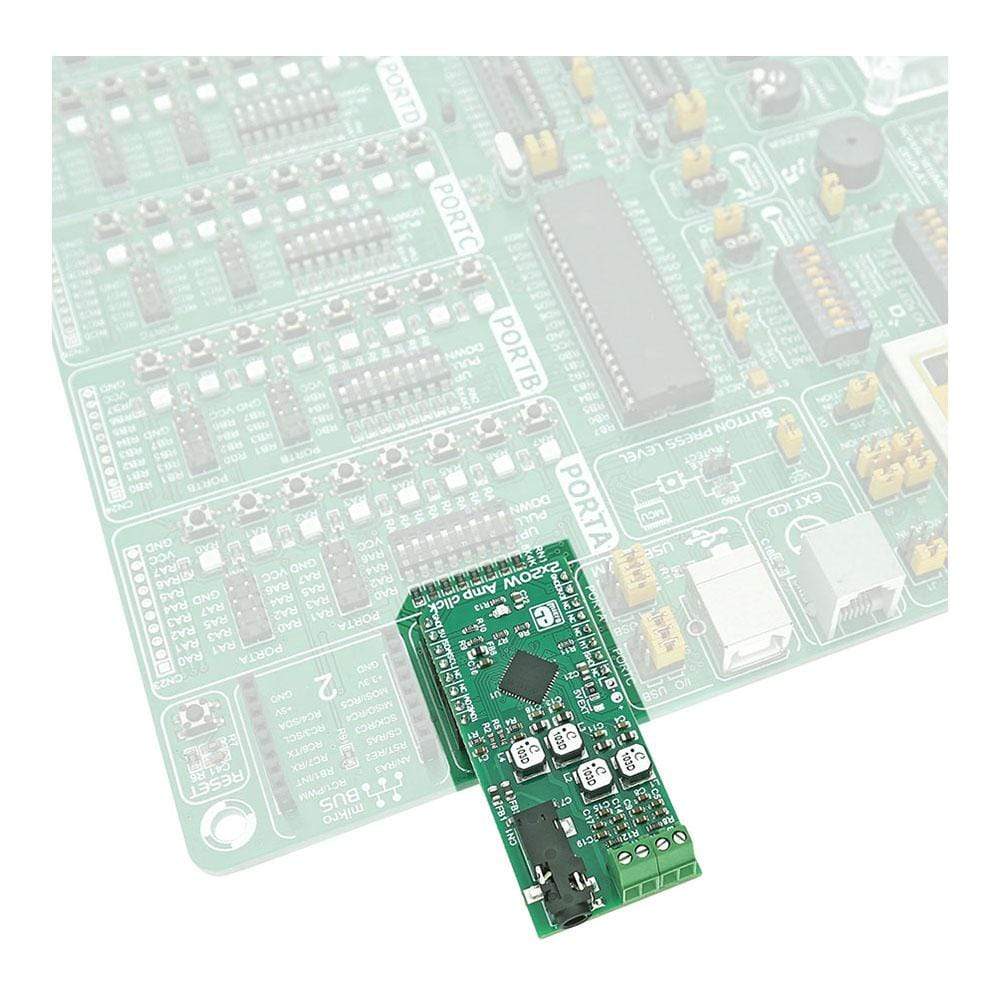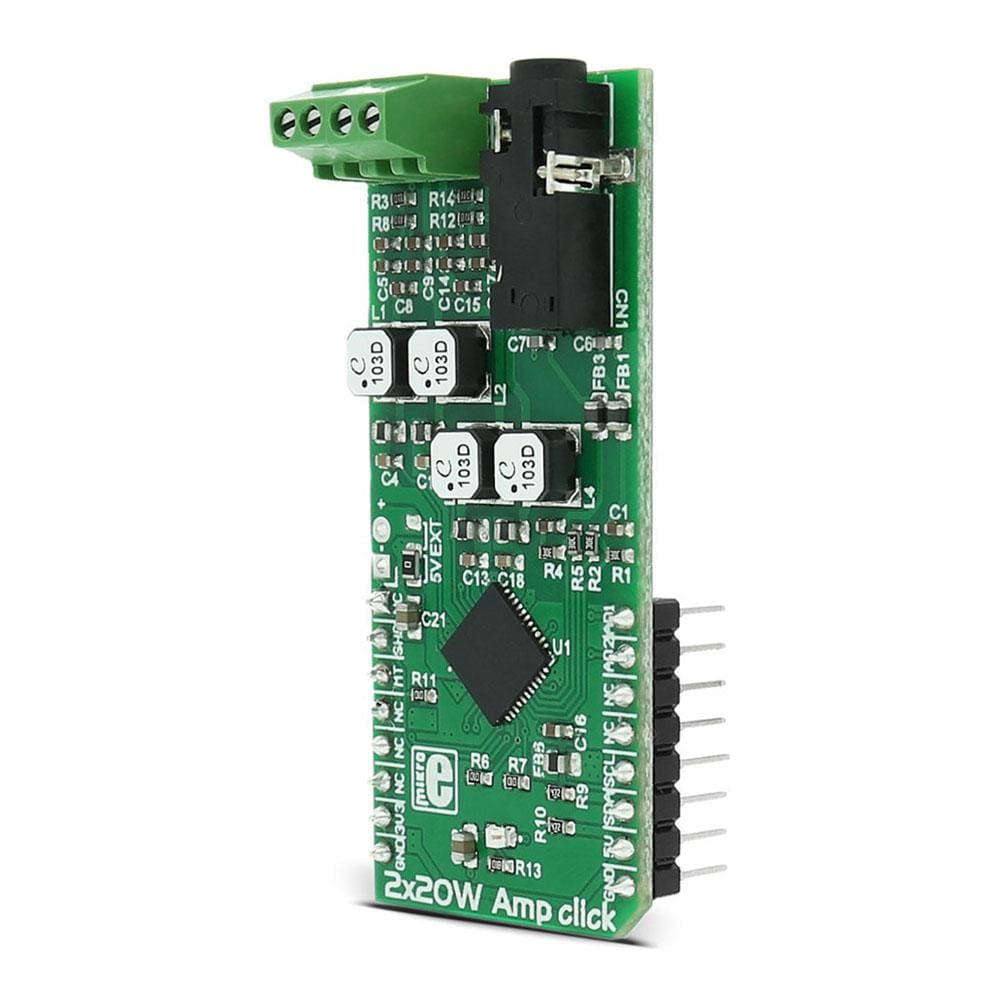

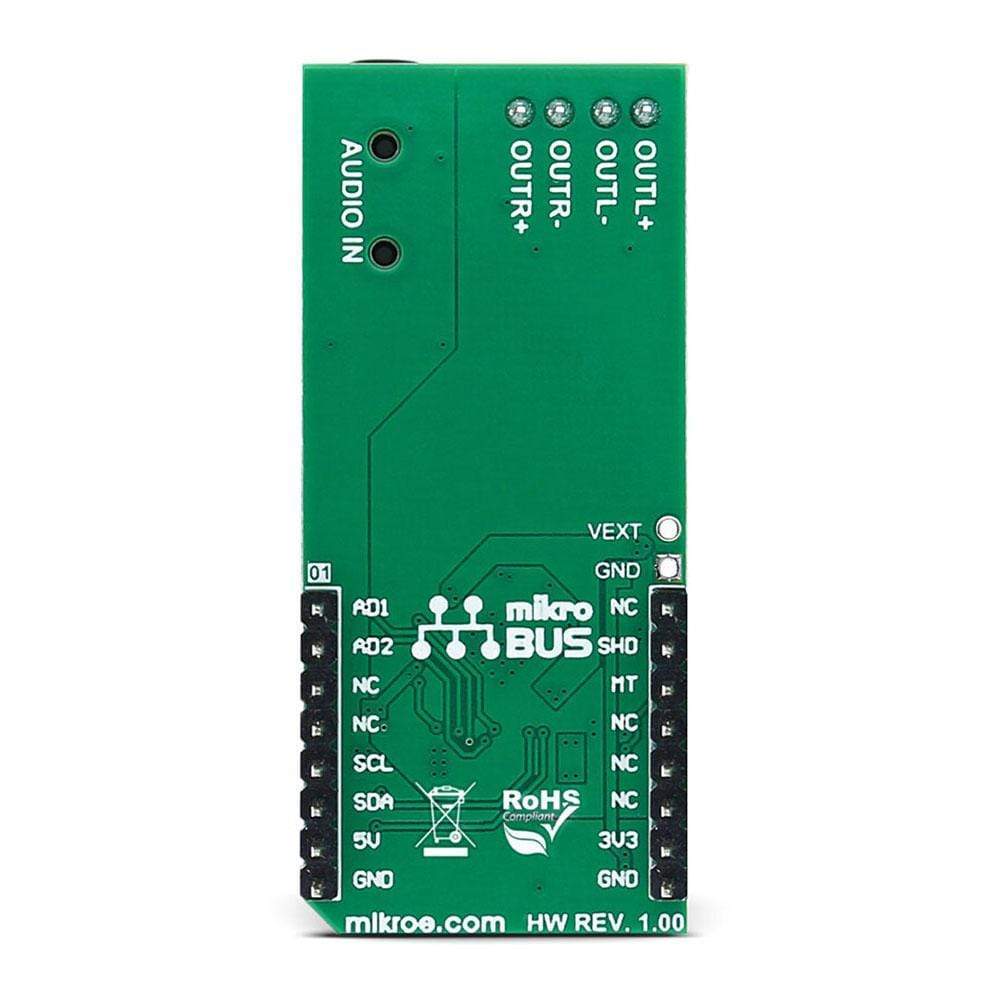
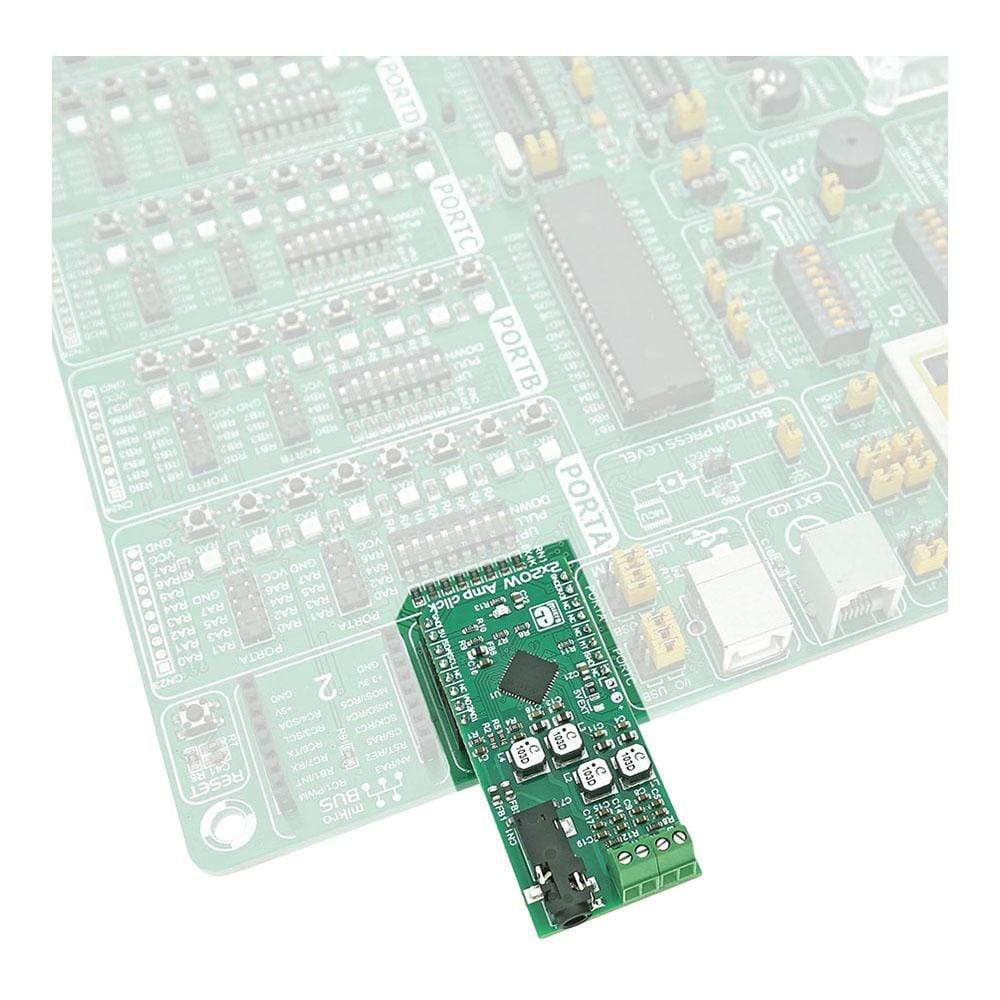
Overview
Transform your audio experience with the powerful 2x20W Amp Click Board. This compact yet robust amplifier board is designed to elevate your sound system to new heights, delivering exceptional performance and crystal-clear audio reproduction.
Whether you're a music aficionado or a passionate DIY enthusiast, the 2 x 20W Amp Click Board is your ultimate solution for all your amplification needs. With stereo amplification capabilities of 20W per channel, immerse yourself in a world of rich, high-fidelity sound.
Key Features and Benefits:
- Experience 64-step volume control for precise audio adjustments tailored to your preferences.
- Enjoy simplified setup and installation with single-supply operation, making it easy to integrate into your audio projects.
Unleash the full potential of your speakers with the adjustable gain feature, allowing you to customise the output to suit your auditory preferences. Say goodbye to Click-and-Pop disruptions as this board ensures smooth transitions between your tracks, enhancing your listening pleasure.
Upgrade your audio projects and take your sound system to a whole new level with the 2 x 20W Amp Click Board. Celebrate the richness and clarity of premium audio with this high-performance amplifier that caters to audiophiles and DIY enthusiasts alike.
- Dimensions: Compact form factor for easy integration
- Technology: Powered by Maxim's MAX9744 stereo class D audio power amplifier
Downloads
Transformez votre expérience audio avec le puissant Amp Click Board 2x20W. Ce panneau d'amplification compact mais robuste est conçu pour élever votre système audio vers de nouveaux sommets, offrant des performances exceptionnelles et une reproduction audio cristalline.
Que vous soyez un amateur de musique ou un passionné de bricolage, le Click Board 2 x 20 W Amp est votre solution ultime pour tous vos besoins d'amplification. Avec des capacités d'amplification stéréo de 20 W par canal, plongez-vous dans un monde de son riche et haute fidélité.
Principales caractéristiques et avantages :
- Bénéficiez d'un contrôle du volume en 64 étapes pour des réglages audio précis adaptés à vos préférences.
- Bénéficiez d'une configuration et d'une installation simplifiées grâce à un fonctionnement à alimentation unique, facilitant ainsi l'intégration dans vos projets audio.
Libérez tout le potentiel de vos enceintes grâce à la fonction de gain réglable, qui vous permet de personnaliser la sortie en fonction de vos préférences auditives. Dites adieu aux interruptions de type clic-pop, car cette carte assure des transitions fluides entre vos pistes, améliorant ainsi votre plaisir d'écoute.
Améliorez vos projets audio et faites passer votre système audio à un tout autre niveau avec le Click Board Amp 2 x 20 W. Célébrez la richesse et la clarté d'un son haut de gamme avec cet amplificateur haute performance qui s'adresse aussi bien aux audiophiles qu'aux amateurs de bricolage.
- Dimensions : Facteur de forme compact pour une intégration facile
- Technologie : Alimenté par l'amplificateur de puissance audio stéréo de classe D MAX9744 de Maxim
| General Information | |
|---|---|
Part Number (SKU) |
MIKROE-2779
|
Manufacturer |
|
| Physical and Mechanical | |
Weight |
0.025 kg
|
| Other | |
Country of Origin |
|
HS Code Customs Tariff code
|
|
EAN |
8606018711604
|
Warranty |
|
Frequently Asked Questions
Have a Question?
Be the first to ask a question about this.

